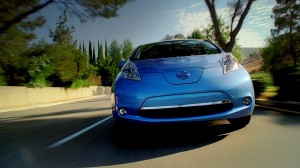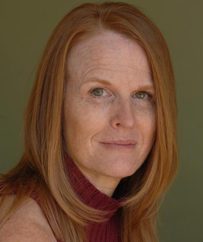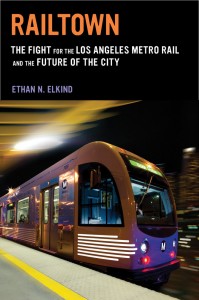Yesterday was a big day of celebration for climate advocates in California. AB 32 (Nunez), the state’s signature greenhouse gas reduction bill, was signed in 2006 — ten years ago to the day. It requires California to reduce emissions to 1990 levels by 2020.
The day was marked by a celebration at Sacramento’s California Museum, sponsored by the USC Schwarzenegger Institute. The “Governator” spoke, as did current Governor Jerry Brown, CARB chair Mary Nichols, Sen. Fran Pavley, Sen. Kevin De Leon, and former Assembly speaker Fabian Nunez.
You can watch the full video above, but some highlights involved a vigorous defense of California’s economic growth since AB 32 passed. Speakers noted that the state has just surpassed the United Kingdom as the world’s fifth largest economy and that California’s GDP of 4.2% in 2015 was twice the national GDP of 2%. So claims that AB 32 would tank the economy have been largely put to rest.
Still, there’s reason to be cautious about bragging too soon. The full force of our emissions reduction efforts has not been felt on our economy, other than some changes such as with fuels, more renewables, and the beginnings of an electric vehicle market. The 2020-2030 time frame will involve much more dramatic changes to our energy system and economy if we hope to achieve the targets.
It was also entertaining to watch Governor Schwarzenegger when Gov. Brown reminded the audience that the politically controversial Delta tunnels and high speed rail projects were launched on his watch. And Gov. Brown emphasized that we’re playing “Russian roulette” with the physics of extreme weather if we don’t act now.
So while yesterday was a day to celebrate, much work remains to be done. Fortunately, as the political showing yesterday indicates, we have powerful momentum and support to carry out the task.
America is an outlier country in terms of its citizens’ high level of disbelief about climate science. And a new Pew poll shows that the partisan divide is strong:
As with previous Pew Research Center surveys, there are wide differences among political party and ideology groups on whether or not human activity is responsible for warming temperatures. A large majority of liberal Democrats (79%) believe the Earth is warming mostly because of human activity. In contrast, only about one-in-six conservative Republicans (15%) say this, a difference of 64 percentage points. A much larger share of conservative Republicans say there is no solid evidence the Earth is warming (36%) or that warming stems from natural causes (48%).
Yet while Americans distrust the science, they seem to like some of the major solutions needed to reduce greenhouse gas emissions. On energy:
Fully 89% of Americans favor more solar panel farms, just 9% oppose. A similarly large share supports more wind turbine farms (83% favor, 14% oppose).
By comparison, the public is more divided over expanding the production of nuclear and fossil fuel energy sources. Specifically, 45% favor more offshore oil and gas drilling, while 52% oppose. Similar shares support and oppose expanding hydraulic fracturing or “fracking” for oil and gas (42% favor and 53% oppose). Some 41% favor more coal mining, while a 57% majority opposes this.
On rooftop solar:
Some 55% of homeowners under age 50 say they have given serious thought to installing or have already installed solar panels at home. Fewer homeowners ages 50 and older say the same (36%).
The key reasons people cite for considering solar are financial followed by concern for the environment. Among all who have installed or given serious thought to installing solar panels, large majorities say their reasons include cost savings on utilities (92%) or helping the environment (87%). Smaller shares of this group, though still majorities, say improved health (67%) or a solar tax investment credit (59%) are reasons they have or would install home solar panels.
And on restricting emissions:
Americans are largely optimistic that restrictions on power plant emissions (51%) and international agreements to limit carbon emissions (49%) can make a big difference to address climate change.
So it’s an odd story, but a reminder that climate advocates should focus on solutions in their messaging on this issue. Not only do solutions make people feel empowered, particularly if they’re centered on “local action,” but they help reframe the debate away from depressing and polarizing scientific findings.
Actor Leonardo DiCaprio is one of the great climate messengers of the day. The hugely popular celebrity has chosen to make the cause of climate change his own, famously devoting his Academy Award speech this year to the subject and funding climate activism through his somewhat troubled personal foundation.
And now he’s set to release what looks to be a pretty epic documentary on climate change, entitled “Before the Flood,” with a trailer that feels like an action movie:
So it’s too bad he’s also one of the celebrity endorsers of an anti-housing ballot initiative in Los Angeles. Infill housing represents one of the most important ways to reduce greenhouse gas emissions. Residents in infill neighborhoods drive less and live in more compact homes that use less energy and water. They also help reduce demand for sprawl housing that eats up open space and farmland.
This ballot initiative will make it harder to build such housing. DiCaprio’s position on this issue is squarely at odds with his important climate advocacy and undermines his credibility on this issue.
I’ll still look forward to watching the documentary and appreciate his advocacy, but I hope he reconsiders his support for the ballot measure.
Today is a pretty big day in the world of U.S. environmental policy. The D.C. Circuit Court of Appeals will hear oral argument on state challenges to the U.S. Environmental Protection Agency’s “Clean Power Plan.” The Plan, promulgated under existing Clean Air Act authority, represents one of the centerpieces of the Obama Administration’s efforts to combat climate change. It also underlies the U.S. commitment to the Paris climate agreement signed in December.
So the stakes are high. Folks were lining up early to get a spot in the courtroom today, as Denise Grab of NYU Law’s Policy Institute tweeted at 5:30am:
75+ people already in line at 5:30 am in the rain for #CleanPowerPlan oral argument. That’s dedication. pic.twitter.com/gvblZqAefp
— Denise Grab (@denisegrab) September 27, 2016
The court debate will hinge on whether or not the EPA is limited to only regulating sources like power plants “behind the fence line” — in other words, only requiring on-site emissions reductions technologies — or whether the EPA can require grid-wide emissions reduction policies, like cap-and-trade or energy efficiency programs.
My UCLA Law colleagues Ann Carlson and Cara Horowitz, along with William Boyd (University of Colorado Law), describe the basic argument here on Legal Planet:
The Clean Power Plan uses the grid’s interconnectedness to reduce power-sector emissions in an efficient, effective way. The Plan would cut carbon dioxide emissions significantly by 2030 – to about a third below 2005 levels. The rule justifies that level of reduction by calculating, among other things, the potential for shifting generation toward low- and zero-emitting sources and away from coal-fired power plants. Yet the coal industry and conservative attorneys general who are challenging the CPP claim that we should ignore the interconnected electricity machine and treat its component parts – power plants – separately.
The case magnifies the intensity of the coming presidential election. Regardless of the outcome today, the case will likely be appealed to the U.S. Supreme Court. Due to a Republican senate blockade on Merrick Garland, President Obama’s pick to fill the open seat from Antonin Scalia’s death last February, the court only has eight justices. A 4-4 tie on this appeal will let the circuit court opinion stand.
So whichever candidate is elected president and fills that seat (or causes Republicans to buckle and confirm Garland in the lame duck session) will have a major impact on the national and international climate fight.
And as last night’s presidential debate showed, the candidates diverge sharply on this issue. Hillary Clinton was the only candidate to mention clean energy jobs and attack Donald Trump for his past statements on climate change as a hoax by the Chinese to gain a competitive advantage. He denied making that claim, but his 2012 tweet says otherwise. Meanwhile, his campaign manager affirmed today that he doesn’t believe in the science that humans are causing climate change.
So the choice could not be clearer on this issue in November. And the court decision stemming from oral argument today will loom large, regardless of how much the media pays attention to climate change during this campaign.
 The White House Council of Economic Advisers has been making noise in the past year about how local restrictions on housing across the country has created a national economic drag. But now the council has come out swinging pretty hard against these “not-in-my-backyard” local policies.
The White House Council of Economic Advisers has been making noise in the past year about how local restrictions on housing across the country has created a national economic drag. But now the council has come out swinging pretty hard against these “not-in-my-backyard” local policies.
In a new “Housing Development Toolkit” [PDF], the White House summarizes how the rise in local land use restrictions has hurt housing affordability across the country by restricting supply. It cites studies showing “sharp increases in zoning and other land use restrictions” in cities as diverse as Boston, New York City, Los Angeles, and San Francisco. But special attention was placed on Los Angeles:
Though popular coverage of these challenges has been most focused on the Bay Area, Seattle, and major East Coast cities, Los Angeles provides a clear illustration of the impact of the primary barrier to development – restrictive zoning. In 1960, Los Angeles was zoned to accommodate 10 million people; after decades of population growth and increased demand, the city is today zoned for only 4.3 million people.
And what are the consequences of all these local restrictions? Well, it’s driven up rents and home prices in high-wage cities, which makes being poor in America even tougher:
In just the last 10 years, the number of very low-income renters paying more than half their income for rent has increased by almost 2.5 million households, to 7.7 million nationwide, in part because barriers to housing development are limiting housing supply.
And even for those who aren’t poor, the housing supply shortage appears to have significantly curtailed economic growth:
A recent study noted that in theoretical models of mobility, economic research suggests our Gross Domestic Product would have been more than 10 percent higher in 2009 if workers and capital had freely moved so that the relative wage distribution remained at its 1964 level. Most of this loss in wages and productivity is caused by increased constraints to housing supply in high-productivity regions, including zoning regulations and other local rules.
It’s hard to avoid the conclusion that those who are fortunate enough to own a home in high-wage metropolitan areas simply don’t want to let others have the same opportunity. As council chair Jason Furman pens in an accompanying op-ed in today’s San Francisco Chronicle:
But in other cases, barriers to housing development can allow a small number of individuals to enjoy the benefits of living in a community while excluding many others, limiting diversity and economic mobility.
In short, housing restrictions have become a key tool to maintain economic (and racial) segregation in our society.
Missing from this discussion, of course, is also the severe environmental impacts of this constrained growth. Because if growth isn’t happening in our low-emissions urban core, it’s going to be pushed out to sprawl areas, resulting in lost open space and more pollution from long driving commutes.
The White House report offers solutions, summarized in this bullet point list and expanded in the text of the report:
- Establishing by-right development
- Taxing vacant land or donate it to non-profit developers
- Streamlining or shortening permitting processes and timelines
- Eliminate off-street parking requirements
- Allowing accessory dwelling units
- Establishing density bonuses
- Enacting high-density and multifamily zoning
- Employing inclusionary zoning
- Establishing development tax or value capture incentives
- Using property tax abatements
All of these ideas are good ones and have been attempted and/or implemented to various degrees by cities and states around the country. But missing in the report is any discussion of a federal role to encourage adoption of these policies. Land use policies are inherently local, and locals won’t give up that sovereignty easily.
So what can the federal government do? Well, given the amount of infrastructure the federal government funds (albeit at a decreasing amount over the past few decades), it could use the power of the purse to motivate better state and local land use decisions. Basically, no more highway and transit dollars for communities that restrict housing growth. The federal government could also convert the federal gas tax to a “vehicle miles traveled” fee, in order to tackle the severe economic and environmental impacts of long commutes.
To be sure, this report is a great start and provides important political momentum to tackle a growing national crisis. Let’s hope the next step will involve actions to motivate better decision-making at the state — and especially local — levels. Because right now the constituencies against change are much more powerful and loud than those advocating for solutions.
One of the keys to passing SB 32 (Pavley), the landmark 2030 climate change legislation the legislature approved this year, is that the California economy has thrived since AB 32 (Nunez) passed in 2006. As many climate advocates have noted, despite lowering emissions on a per capita and aggregate level for over a decade, California’s economy is growing at one of the fastest clips in the nation.
All of this economic activity happened despite numerous regulatory and statutory programs to rein in carbon emissions, including cap-and-trade, renewable energy mandates, energy efficiency standards, and the low-carbon fuel standard. And the state is on pace to meet the AB 32 2020 goals, which requires a return to 1990 levels of emissions (about a 15% reduction from business as usual).
In short, this progress has deflated the typical conservative objections to environmental regulations, that they will be economy crushers and job killers. Here’s a summary of the good news, as Debra Kahn reports in ClimateWire (pay-walled):
Meanwhile, California’s economy since 2006 has jumped from the eighth- to the sixth-largest in the world. Yet the amount of greenhouse gas emissions it produces per person, as well as per dollar of gross domestic product, have fallen. Since 2001, state agencies have reported, its carbon emissions per unit of GDP have fallen 28 percent. Last year, the state was home to 68 percent of all clean technology investment nationwide and led in clean-tech patent registrations, as well, according to environmental advocacy group Next 10. And from 2007 to 2015, California outstripped the United States as a whole in job growth and personal income, according to an analysis released in June by Chapman University.
But the celebration shouldn’t get too loud, at least not yet. It’s clear that the state has benefited from some unusual trends that has made it both easier to meet the emissions goals and to grow the economy in a carbon-lite way. First, the economic recession in 2009 put a significant damper on emissions with a slower economy:
“California had a pretty soft economy for many years after its goal was set,” said Severin Borenstein, an economics professor at UC Berkeley and a member of a committee that the California Air Resources Board (ARB) set up in 2012-13 to advise it on the design of its cap-and-trade market. “Although it’s heating up now, we will easily make the 2020 goal, and that will in large part be due to the weak economy for many years.”
Second, the state’s economy has grown in emission-lite industries:
Since 2009, California has lost 1 percent of its manufacturing jobs, compared to 3.7 percent growth in the United States as a whole. During the same period, California’s information services sector grew 10.9 percent, compared to a 1.4 percent decline nationwide, according to Chapman’s June analysis.
We’ve essentially pushed many energy-intensive industries out of state, while benefiting from a boom in services industry like tech, which has made it much easier to meet these carbon-reduction goals.
To be sure, I would also credit the thoughtful, measured approach of many of California’s climate programs and regulations. And of course we have to credit the innovation in the private sector, bringing down the costs of solar PV and batteries and scaling up electric vehicles and low-carbon biofuels, among others.
But as we head into a post-SB 32 world of 40 percent reductions by 2030, the state may not be so lucky with these larger economic trends going forward. It doesn’t mean we should change the approach, but it means we should be honest about what it takes to decarbonize an entire economy and do everything we can to continue bringing down the costs of the technologies that will help us achieve those goals.
Part of the point of AB 32 was to begin the process of “bending the curve” on emissions and clean tech costs. We’re seeing that happen. But to continue on this path through 2030 without costing the economy significantly (and thereby undermining public support), we’ll need further price declines and massive gains in energy efficiency. It’s all doable, but it still remains an open question as to how much and how soon.
Until then, we may need to inject some notes of caution into an otherwise positive picture, so far.
ARPA-E just might save the world. And you probably never heard of it. As I wrote back in January 2015 (okay, I’ll just quote myself here):
Why is ARPA-E so important? Because this Department of Energy group is searching out and funding those moonshot — or sunshot — technologies that will give us the energy breakthroughs we need to fight climate change. If we’re going to find the better battery to finally wean us off oil and into electric drives, or build the cheap energy storage device to capture surplus renewables and truly decarbonize the grid, or make our solar panels even more efficient and cheap, chances are ARPA-E will be involved in making that happen.
Now the agency, on the occasion of its seventh birthday, is releasing a report detailing some of its successes. Per Utility Dive:
Since 2009, ARPA-E has provided $1.3 billion in funding to more than 475 projects. Of those, 45 have gone on to raise $1.25 billion in publicly-reported private sector funding.
…
“ARPA-E fills a critical gap in the innovation ecosystem, investing to de-risk and accelerate the development of high risk, high impact technologies that would otherwise find it difficult to secure investment,” said Jesse Jenkins, a researcher and doctoral candidate at the Massachusetts Institute of Technology.“This is an essential role for government to step into, helping bridge the ‘technological valley of death,’ a consistent dearth of private sector funding that impedes the translation of promising research into commercial technologies,” he added.
The article describes a few examples, particularly with battery systems and other energy storage technologies. These funded projects include hybrid fuel cells, zinc-air batteries, as well as flywheels and a vegetable-based flow battery developed by Harvard researchers.
This is the kind of agency that the federal government should be funding to the brim, especially with this impressive track record on deployment. It’s also one of the critical issues at stake between a Trump or Clinton victory this fall. If we want to continue on this path and fund the breakthrough clean technologies of the future, the choice is clearly for Clinton.
And in the meantime, the success to date for ARPA-E is a big credit to President Obama and the agency staff. Let’s hope they continue the momentum, as the health of the planet depends on it.
California committed itself last week to the most aggressive greenhouse gas reduction goals in the country. Governor Brown signed SB 32 (Pavley) and AB 197 (Garcia) in Los Angeles on Thursday, placing the state on a pace to reduce emissions 40 percent below 1990 levels by 2030.
The Real News Network interviewed me on Friday to discuss the implications, in a piece airing today:
California leads the nation in plug-in electric vehicle sales, with about 40% of the nationwide total happening in the Golden State. While some of that progress is related to the sheer market size here, much of it is due to state policies. And the biggest of those policies is the “zero emission vehicle” (or “ZEV”) mandate, which the California Air Resources Board first adopted by regulation in 1990 under its Clean Air Act authority.
 The program has been modified over the years but essentially requires automakers to sell a certain amount of “clean” vehicles (plug-in hybrids, battery electrics, and fuel cells), based on their total sales, or else they have to purchase credits for an equivalent amount. The goal is to achieve 15 percent of new vehicle sales from these “clean” versions by 2025, up from the current 3 percent market share, where it’s been stuck 2014.
The program has been modified over the years but essentially requires automakers to sell a certain amount of “clean” vehicles (plug-in hybrids, battery electrics, and fuel cells), based on their total sales, or else they have to purchase credits for an equivalent amount. The goal is to achieve 15 percent of new vehicle sales from these “clean” versions by 2025, up from the current 3 percent market share, where it’s been stuck 2014.
But here’s the problem: the credit system has generated a glut. As a result, many automakers now have no incentive to actually produce and sell more electric vehicles. And with recent weak demand for electric vehicles (due in part to low gas prices), they argue that they’d rather stockpile credits than make new vehicles.
It’s gotten under the skin of Tesla chief Elon Musk and his staff. Tesla benefits from the sale of credits to other automakers, and so the company suffers when the glut drives down prices and diminishes demand. Musk would like to see a higher threshold of credits needed to satisfy the requirement, which would just so happen to benefit Tesla’s bottom line.
It’s gotten personal among the automakers, per Reuters:
Earlier this month, Tesla’s Diarmuid O’Connell, vice president of business development, sparred with lobbyists for major automakers during a conference near Traverse City, Mich. He chided the industry for fielding electric cars that don’t sell because they are slow and have all the panache of household “appliances.”
John Bozzella, head of a group that represents several Asian and European auto makers, countered that most consumers don’t want electric vehicles – and pointedly wished Tesla well in its quest to achieve profitability.
The Board will be revising the program this December, so the issue has become a hot potato. NRDC released a recent study [PDF] of the current rules and progress to date, which documents that at this pace the state will fail to meet its deployment goals by 2025. They argue for tightened rules, such as a higher percentage of automaker sales that must be zero-emission through 2025, fewer credits awarded for each clean vehicle, and reduced credits that can be “banked” over time.
Clearly, changes like these need to happen with the program, because business-as-usual is not likely to get the electric vehicle market to the place it needs to be for long-term pollution reduction. To be sure, the market is making good strides, with the Tesla Model 3 and Chevy Bolt on their way. And the inevitable rise in gas prices will eventually help boost demand. But California cannot meet its long-term climate goals without widespread vehicle electrification, and a stronger ZEV program is key to making that happen.
 Jill Stewart is the campaign director for the Neighborhood Integrity Initiative, a Los Angeles measure proposed for the March 2017 ballot that would essentially freeze new development in the region. It’s fundamentally a NIMBY campaign in response to the region’s haphazard planning and entitlement process.
Jill Stewart is the campaign director for the Neighborhood Integrity Initiative, a Los Angeles measure proposed for the March 2017 ballot that would essentially freeze new development in the region. It’s fundamentally a NIMBY campaign in response to the region’s haphazard planning and entitlement process.
The Planning Report recently interviewed Stewart, in which she badly misstates urban theory (and evidence) on smart growth:
In a TPR interview in February, you said: “I have not been impressed by the new urban theory that very dense development through neighborhoods near bus stops, and so on, is going to reduce congestion. In fact, we’ve seen the opposite.” Is that assertion consistent with what you learned campaigning for NII?
Absolutely. I think most people are realizing that it is another failed urban theory put together by academics that have zero proof that it works.
The new mantra in every big city feels the same, essentially being: “We are all going to change the way we live.” I’m from Seattle, and I was there for a recent vacation. My Seattle friends and I were dreaming about a more intelligent way to go if we weren’t caught up in the urban planning religion that has gripped so many people. It’s comforting that a majority of residents are not gripped by this mantra. They do not buy into it.
When I discussed with my friends, we talked about how people are going to start working at home more. People are also starting to take Uber and Lyft more. It is a completely different world that is not built around fixed rail lines and coming into a big city center to work. The big city center is very 1980s or 1990s.
We came up with a way to resolve this: by rewarding the way people really behave. As more people work at home and stay off the roads, they should get a massive tax rebate, as long as they can prove it. Staying off the streets and not using the infrastructure should be rewarded. Often, the city of LA adds taxes to people who work from home. That’s backwards.
The urban planners are stuck in a different world. They are saying that everyone needs to move close together and cram their children into places where there is nowhere to play. The theory that people enjoy living around the noise and congestion is wrong, and we need to respond to how people really live.
Where to begin? First, I’ve yet to meet any urban planner who says that everyone “needs” to move into compact, transit-friendly neighborhoods. Rather, the argument is that we don’t have enough of these neighborhoods, at least at affordable prices, to even give people the option of living there, if they seek a lifestyle that is not car dependent. Los Angeles certainly provides plenty of options for suburban-style living, but not so much for low-crime, walkable, transit-friendly neighborhoods. And when the region does provide those options, the demand is through the roof, leading to high rents and home prices that keep out all but the wealthiest.
Second, the urban theory of smart growth has never been about “reducing congestion.” With growth comes some congestion, but growth in the right places means people have the option to drive less and therefore spend less time stuck in traffic. So the theory is really about reducing per capita driving miles.
And there’s plenty of evidence this works. Just look at any map of greenhouse gas emissions per capita, which is largely a function of vehicle miles traveled: it’s always lowest in compact urban centers near transit. People in these areas don’t need to spend much time in traffic, if at all.
But ultimately, if you’re simply anti-growth — or anti-growth anywhere near you — then none of this information really matters. But if you care about housing affordability, the environment, and creating better, more connected and convenient neighborhoods, then it’s important to get the facts straight.


